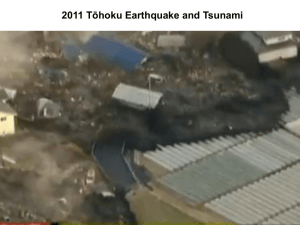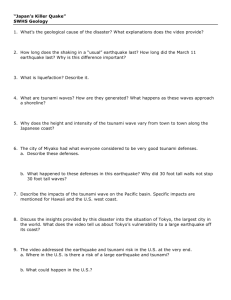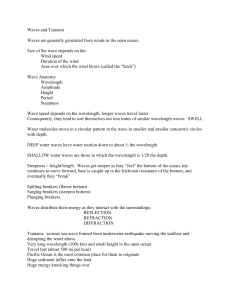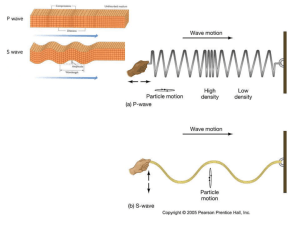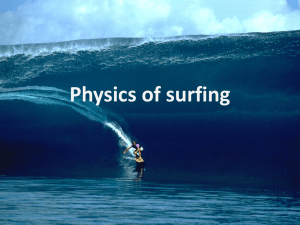Japan's Killer Quake
advertisement
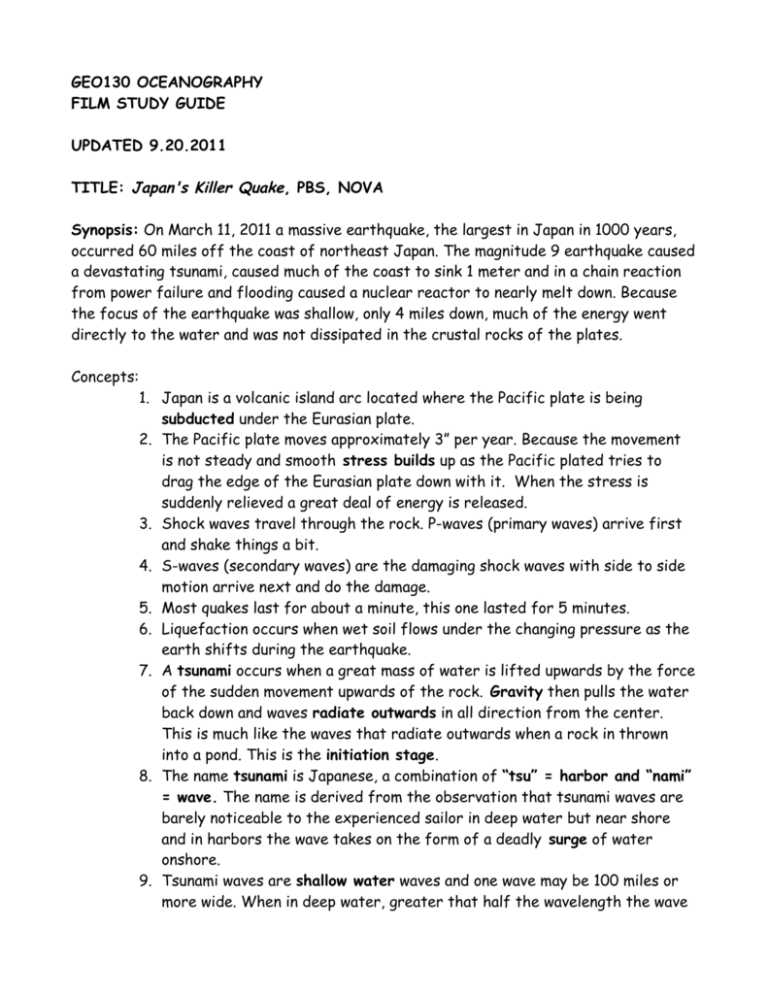
GEO130 OCEANOGRAPHY FILM STUDY GUIDE UPDATED 9.20.2011 TITLE: Japan's Killer Quake, PBS, NOVA Synopsis: On March 11, 2011 a massive earthquake, the largest in Japan in 1000 years, occurred 60 miles off the coast of northeast Japan. The magnitude 9 earthquake caused a devastating tsunami, caused much of the coast to sink 1 meter and in a chain reaction from power failure and flooding caused a nuclear reactor to nearly melt down. Because the focus of the earthquake was shallow, only 4 miles down, much of the energy went directly to the water and was not dissipated in the crustal rocks of the plates. Concepts: 1. Japan is a volcanic island arc located where the Pacific plate is being subducted under the Eurasian plate. 2. The Pacific plate moves approximately 3” per year. Because the movement is not steady and smooth stress builds up as the Pacific plated tries to drag the edge of the Eurasian plate down with it. When the stress is suddenly relieved a great deal of energy is released. 3. Shock waves travel through the rock. P-waves (primary waves) arrive first and shake things a bit. 4. S-waves (secondary waves) are the damaging shock waves with side to side motion arrive next and do the damage. 5. Most quakes last for about a minute, this one lasted for 5 minutes. 6. Liquefaction occurs when wet soil flows under the changing pressure as the earth shifts during the earthquake. 7. A tsunami occurs when a great mass of water is lifted upwards by the force of the sudden movement upwards of the rock. Gravity then pulls the water back down and waves radiate outwards in all direction from the center. This is much like the waves that radiate outwards when a rock in thrown into a pond. This is the initiation stage. 8. The name tsunami is Japanese, a combination of “tsu” = harbor and “nami” = wave. The name is derived from the observation that tsunami waves are barely noticeable to the experienced sailor in deep water but near shore and in harbors the wave takes on the form of a deadly surge of water onshore. 9. Tsunami waves are shallow water waves and one wave may be 100 miles or more wide. When in deep water, greater that half the wavelength the wave travels at up to 600 mph. The movement result in no net displacement of water just the transfer of energy through the water. 10. When the wave reaches shallow water near shore the leading edge is climbing a hill towards the shore which slows the leading edge of the wave. Friction also slows the leading edge and the wave may slow to 35 mph. 11. At the same time because the wave is 100 miles wide the back edge is still racing towards shore at hundreds of miles per hour and it forces the water nearing shore to surge inland. 12. The water becomes more like a debris laden avalanche than a wave and bulldozes everything in its path inland. 13. When the water flows back out to sea cars, buildings, people and everything else is pulled out with it. 14. Often water will recede along the shore as the tsunami approaches leading the unaware to venture out as the tsunami is bearing down on them. On Dec. 24, 2004 this happened in many parts of Indonesia leading to many deaths. 15. Tsunami severity is often a function of coastline geometry. Steep bottom slopes lead to less of a surge while shallow, wide coastal waters will allow the surge to go farther inland. 16. Tsunami waves can be amplified by bottom geometry.



